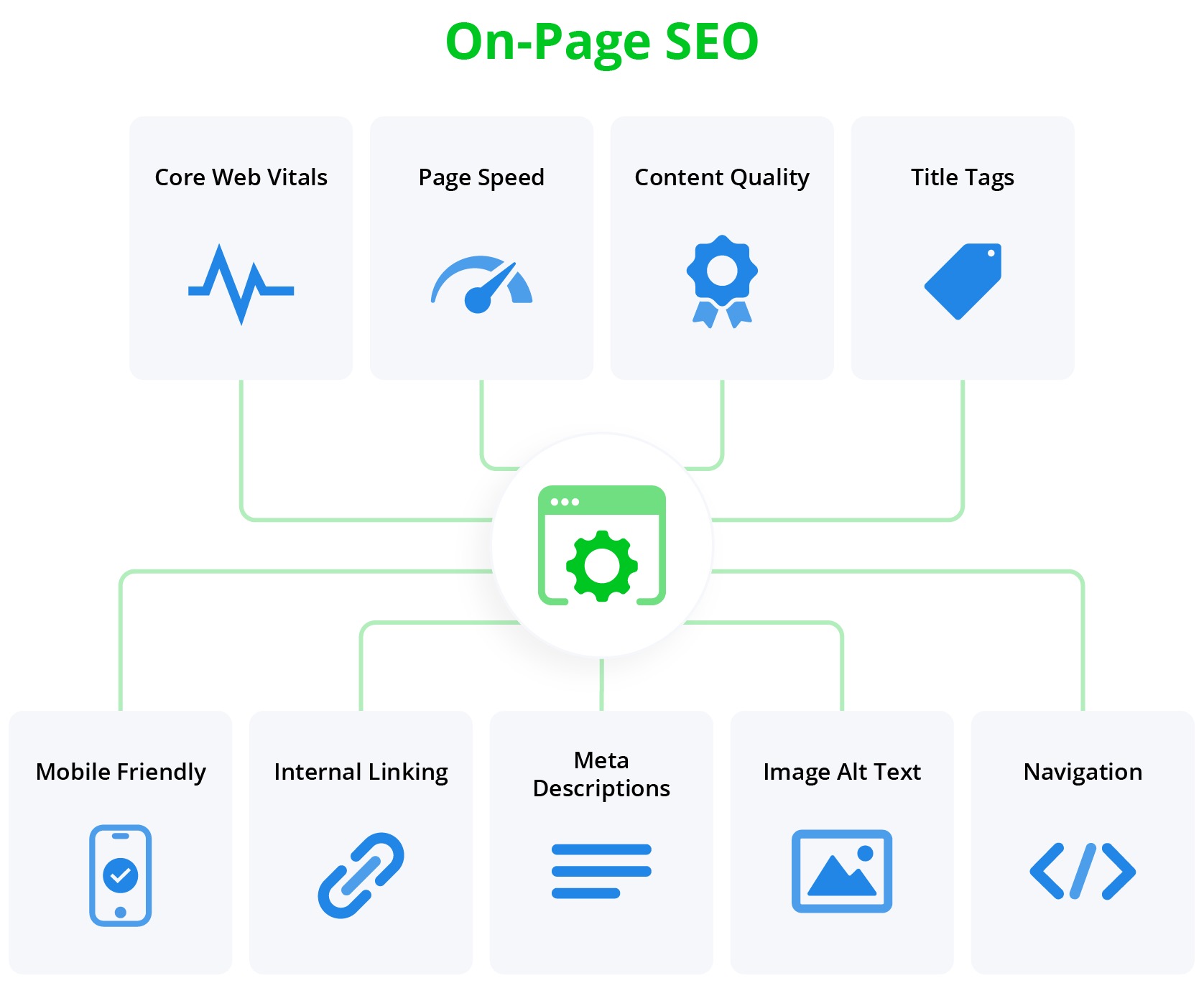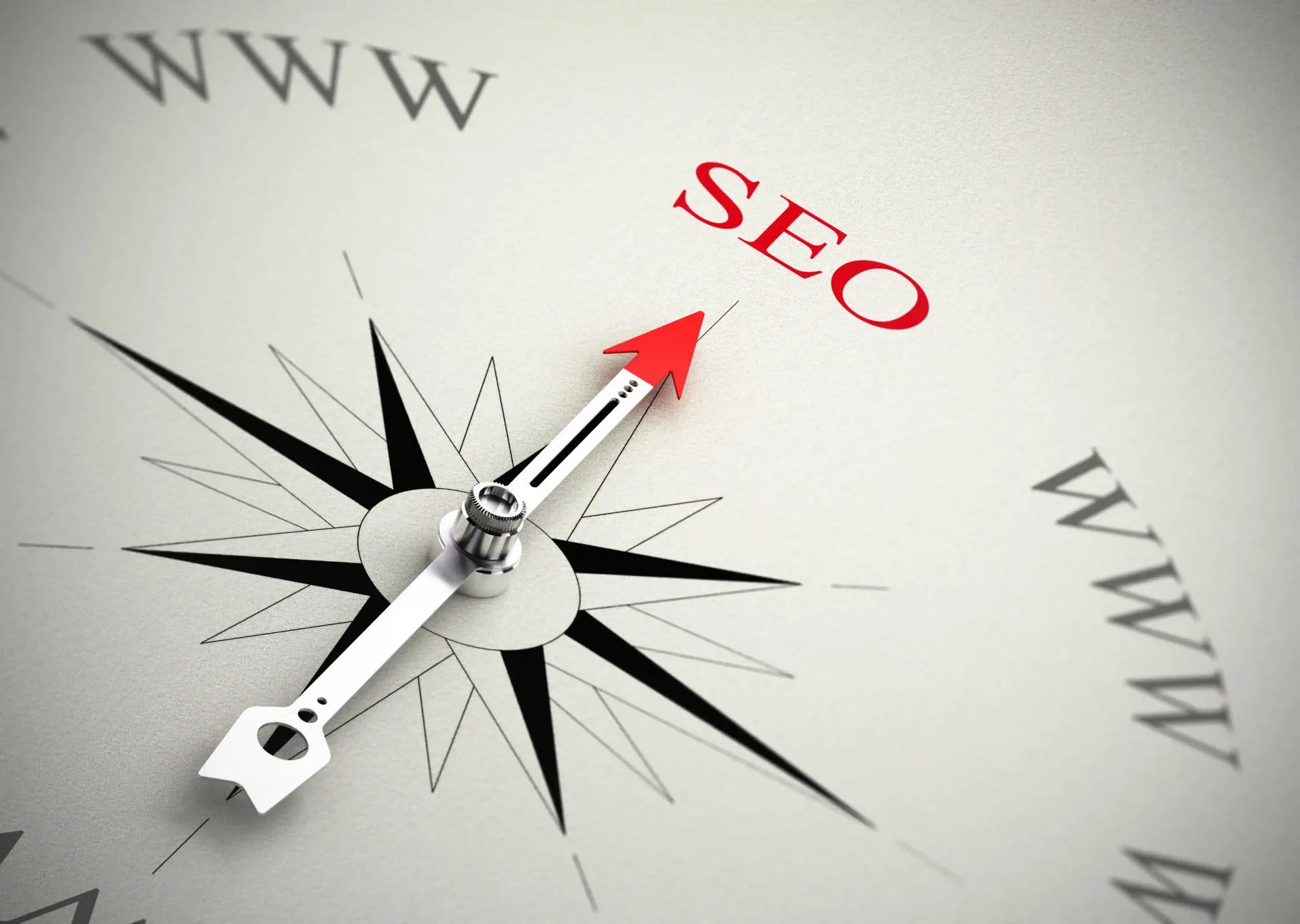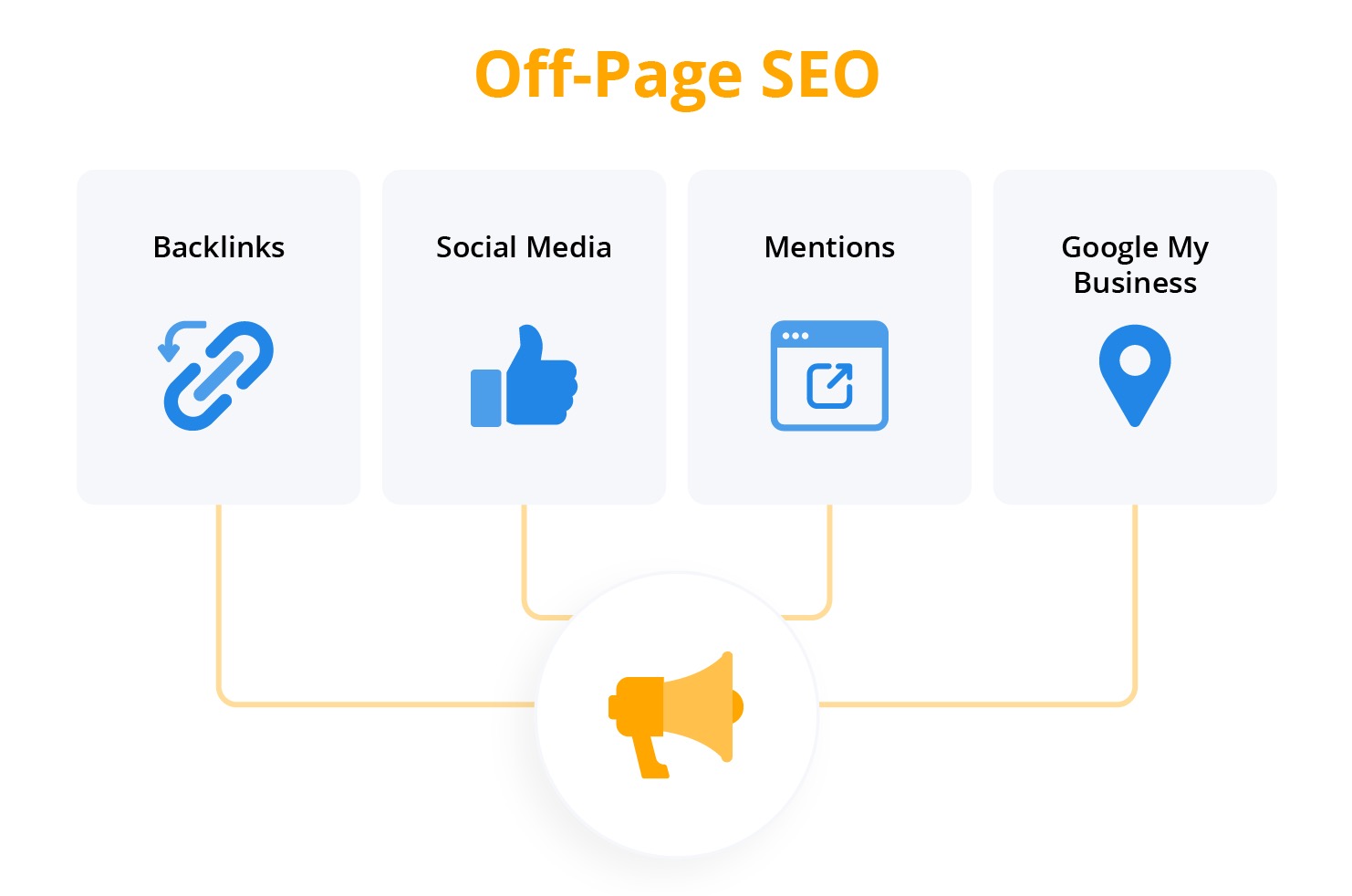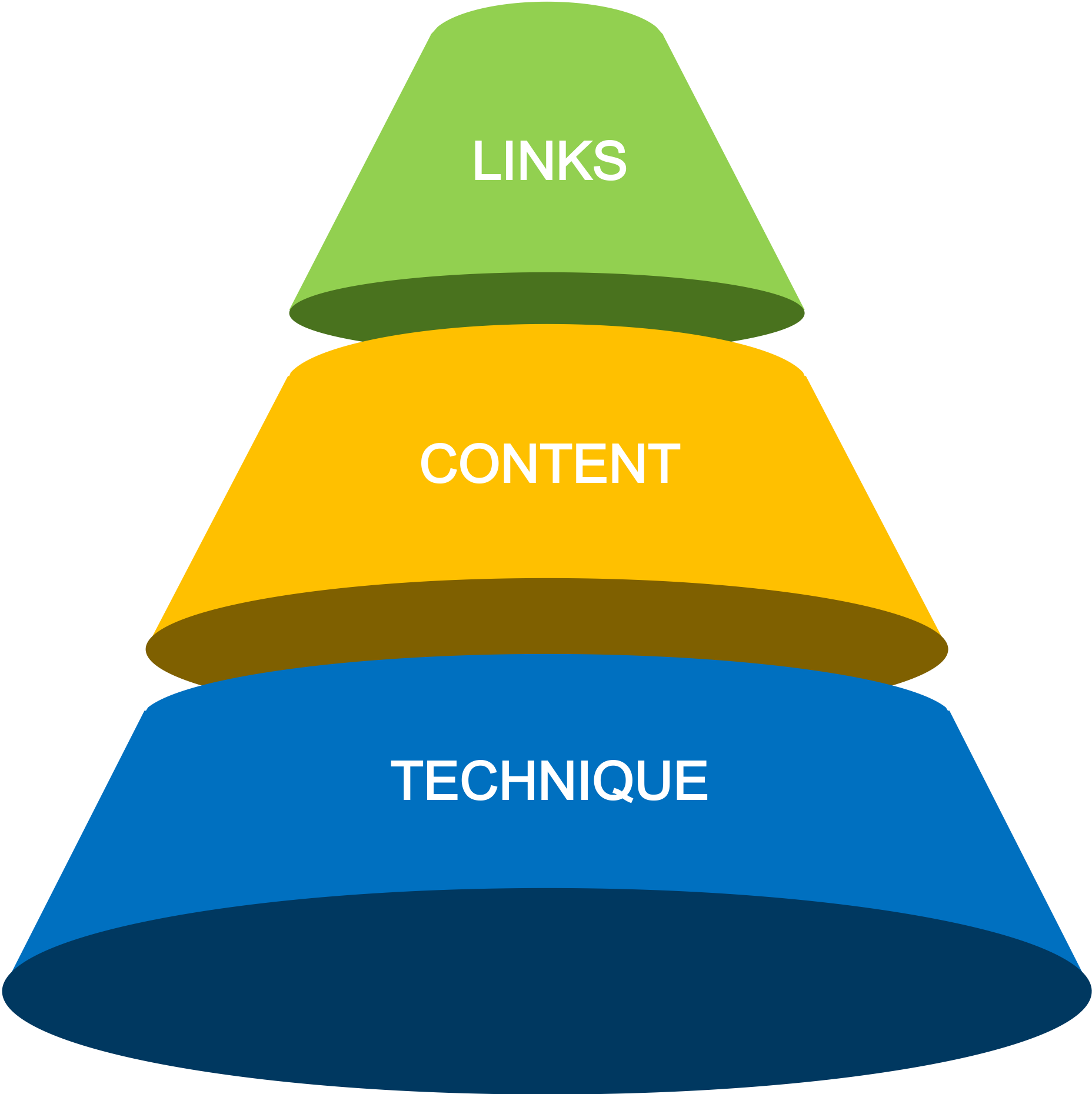Search Engine Optimization
#2 On-page SEO and off-page SEO
On-page SEO and off-page SEO
A strategy for SEO is important
In modern times, people have come to expect that they can find whatever they are looking for at the top of Google search results. If your website ranks highly on the search engine results page, it becomes easier to attract new customers. Thus, a robust search engine optimization strategy is one of the most beneficial investments a business can make.
- On-page SEO refers to various SEO factors and techniques focused on optimizing aspects of your website that are within your control.
- Off-page SEO refers to SEO factors and strategies that promote your site or brand across the web.
Essentially, on-page SEO involves building a website attractive to users and therefore search engines. Off-page SEO revolves around increasing exposure for your website while building trust and authority for its content.
On-page SEO factors
On-page SEO pertains to all the actions taken to enhance a website’s ranking in search engine results by optimizing its content. It includes ensuring that the website’s content can be crawled, indexed, and comprehended by search engines, among other things.
Furthermore, on-page SEO involves adopting techniques that enhance the user’s experience when they visit a website. Search engines such as Google aim to suggest the best websites for searchers, so making a site user-friendly and easy to navigate for humans is also a crucial component of on-page SEO.
Core web vitals
One of the newest Google on-page ranking factors, Core Web Vitals are a set of real-world metrics that quantify a website’s user experience. They measure a range of important dimensions.

Page speed
A page loading time is an important part of on-page SEO. Google tends to rank faster pages higher than slower ones. Optimizing page speed can also help get more of your pages into Google’s search index. There are lots of ways to improve a page’s speed but images, JavaScript files, caching and compression are good places to start.
Mobile friendliness
In short, mobile friendliness is a measure of how well a site performs when someone tries to visit and use the site with a mobile device. Mobile friendly pages are able to shrink down to fit on any device’s screen while still allowing people to navigate around the page to achieve their goals.
Meta description
Meta descriptions are HTML tags that serve a similar purpose to title tags by summarizing what the webpage is about. Although Google considers these descriptions when determining the relevance of a page to a search query, their primary role in search engine optimization (SEO) is to entice users to click on the link and visit your website from the search results.
Content quality
Content reigns supreme in on-page SEO. Search engines use various methods to assess the quality of content, such as its relevance to a user’s query, uniqueness, usefulness to the user, and readability. If the answers to these questions are affirmative, your content is high quality.
Image alt+text
Image alt+text refers to an attribute within an image’s HTML tag that contains a text description of the image. Alt text is used by assistive technologies such as screen readers as well as browsers as a backup when an image fails to load on a page. Search engines look at alt text as a way to decide how relevant an image is to someone’s query.
Navigation
Regarding on-page SEO, “navigation” refers to ensuring that all users can access and consume the content on a webpage. Google places great importance on the type of page it recommends to searchers and wants to ensure that anything recommended is accessible to everyone, regardless of their disability or browser.
Linking to other pages on your site from within your own content is useful as it helps visitors find related content with extra background or context. Internal linking also improves your site’s SEO by helping search engines find new content.

HTML headers
HTML headers are HTML tags that indicate headlines and subheadings within the content of a webpage. They aid visitors to your website in reading and comprehending your content. Regarding on-page SEO, these tags assist search engines in understanding the subject matter of the content on a page and its relevance to a user’s search query.
Title tags
Page titles, commonly known as title tags, are HTML tags that establish the title of a page and provide a description of the page’s content. Google uses the keywords in title tags, among other factors, to determine the topical relevance of a page when searching for content that is pertinent to a user’s query.
Off-page SEO factors
Off-page SEO is the collection of strategies, tactics and efforts you undertake to promote your content on third-party sites across the web. This part of SEO focuses on getting your site, company and/or brand discussed on another website.
Backlinks
Backlink quality and quantity are still some of the most important factors for off-page SEO. Backlinks are so important that Google has dedicated multiple algorithm updates to fighting link schemes and link spam. Links are important for off-page SEO because they pass what is known as “link juice” to your site, helping it to appear more authoritative and trustworthy in the eyes of search engines.

Social media
While a page’s ranking is not directly influenced by how many shares, likes or comments it has, social media is still an important channel to promote your website online. Social media helps people find and engage with your company online and helps you reach new and existing customers.
Unliked mentions
Unlinked mentions refer to instances when an independent website mentions your company name or website on the internet but does not include a hyperlink to your site.
Google my business
Google My Business (GMB) allows businesses to easily and simply provide important information directly to Google. This information includes location and/or service area, business type, contact information and opening hours. GMB is also how Google populates results for the Google local pack and Google Maps searches. As such, it’s a vital off-page SEO factor for any local business that relies on traffic from a specific geographical location.
Start optimizing
It is essential to remember that a successful SEO strategy does not involve choosing between on-page SEO and off-page SEO. Instead, for optimal results, it is advisable to prioritize and ensure that your on-page SEO is of high quality before dedicating significant effort and resources to link-building or promoting your website on social media platforms.
Start optimizing!
It is essential to remember that a successful SEO strategy does not involve choosing between on-page SEO and off-page SEO. Instead, for optimal results, it is advisable to prioritize and ensure that your on-page SEO is of high quality before dedicating significant effort and resources to link-building or promoting your website on social media platforms.

As a guide, you generally split the SEO work into three areas where the technique and content precede, the third priority being link building. Concentrate on the work going from the bottom up. It makes no sense to take on link building if the two other areas aren’t handled.
